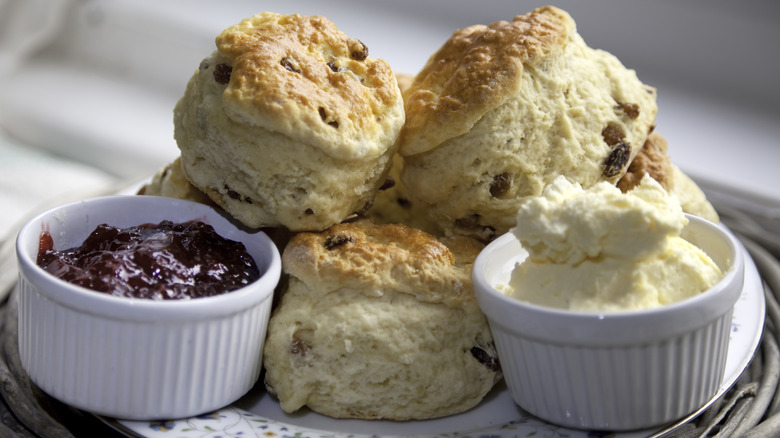Soft Or Solid? Here's What To Look For When Perfecting Your Scone Dough
There are few baked goods as satisfying as a well-crafted scone — buttery, flaky, moist, with a subtle sweetness and sophisticated flavors. But baking one isn't as easy as it might appear to those who haven't tried. At its core, making a successful scone all comes down to creating the right kind of dough.
Like all baking, creating the perfect scone dough requires a balance. In an instructional YouTube video, legendary baker and TV personality Paul Hollywood says softness is key for dough texture, though it shouldn't be so wet that it pours out of the mixing bowl. Correctly mixed dough should be firm enough to form a lump while still retaining some tackiness. The texture should be sufficient to fold the dough, not knead it, as Hollywood points out. Those following his technique should have no trouble working it out by feel after a few tries, as Hollywood suggests hand-mixing the dough at every stage, from integrating the butter to combining wet ingredients like eggs and milk.
Other signs and tricks for the best dough
Perfecting the dough's texture isn't the only element home bakers should focus on. Another crucial step for perfectly flaky scones is to simply chill ingredients like butter, eggs, and cream before mixing them into scone dough. Keeping the overall mixture as cool as possible prevents the butter from melting before the scones hit the oven, a vital step in creating the flakiness of an expertly cooked scone. Around 10 minutes in the fridge should be enough for scone dough under normal conditions (in other words, not the hot and humid tent in which Hollywood usually sees people work on "The Great British Baking Show").
Finally, while it can be tempting to keep fussing with your dough if it's a bit lumpy, you never want to overmix your scones, as this can result in dense, tough baked goods instead of the soft, flaky ones you're looking for.

